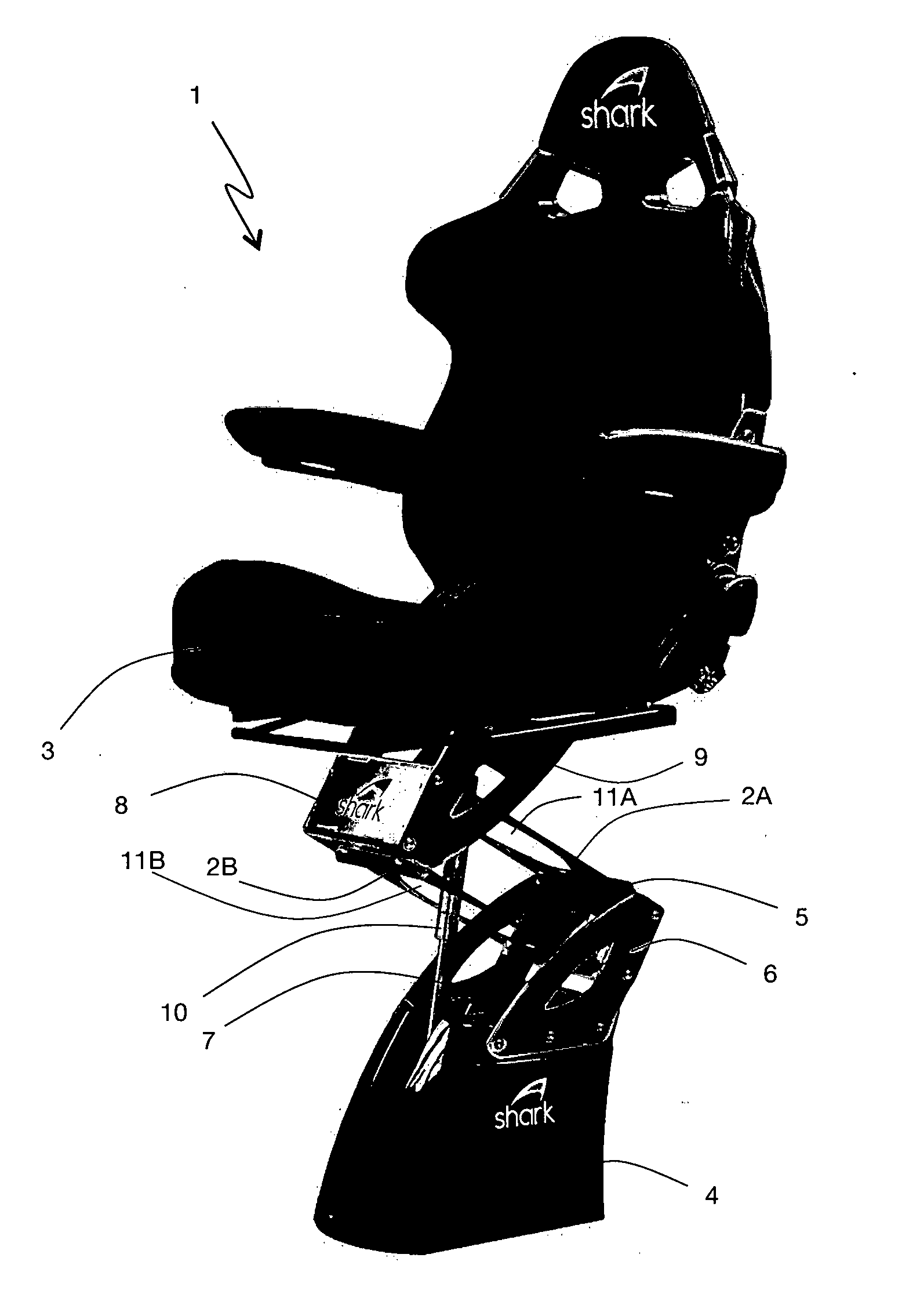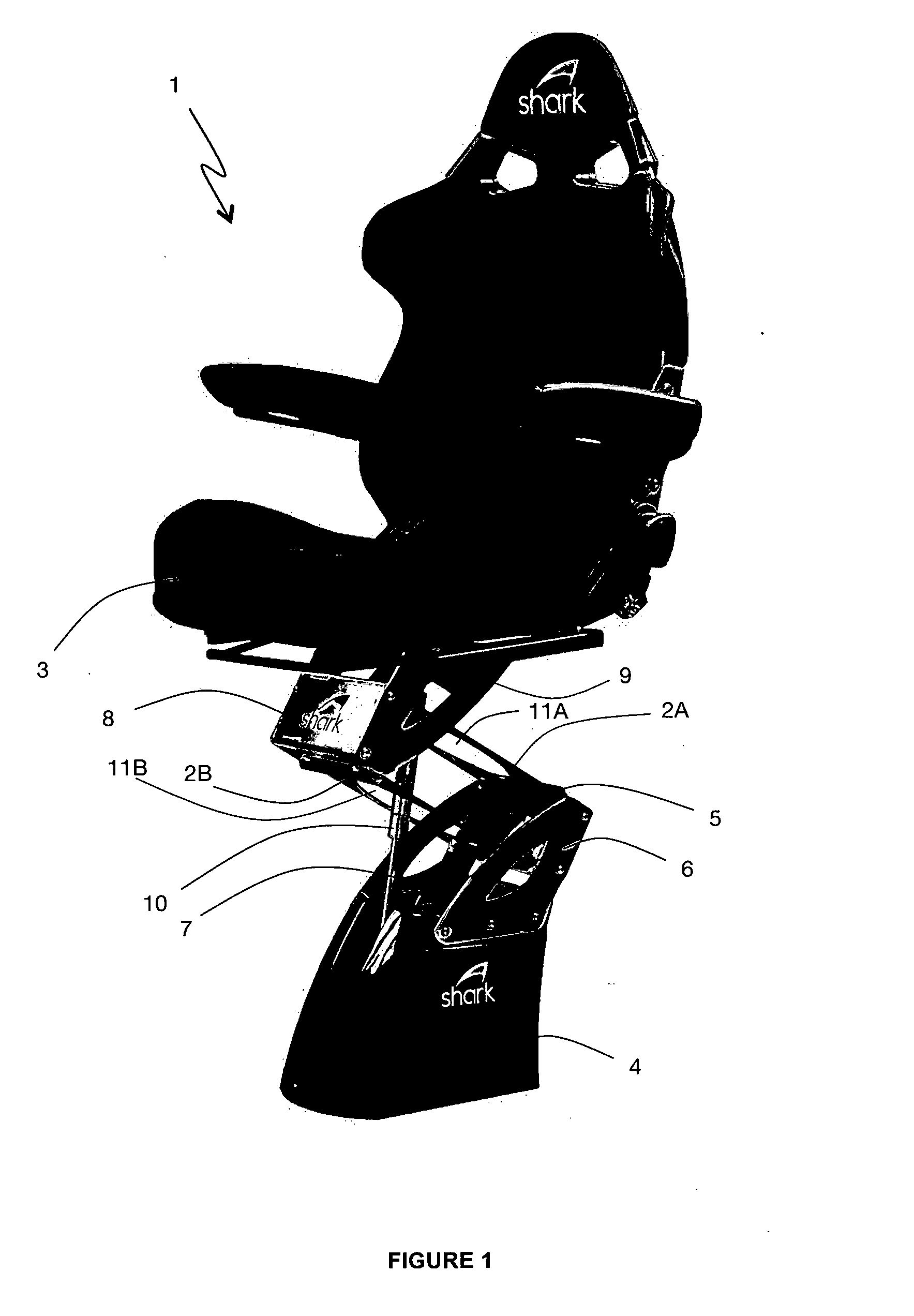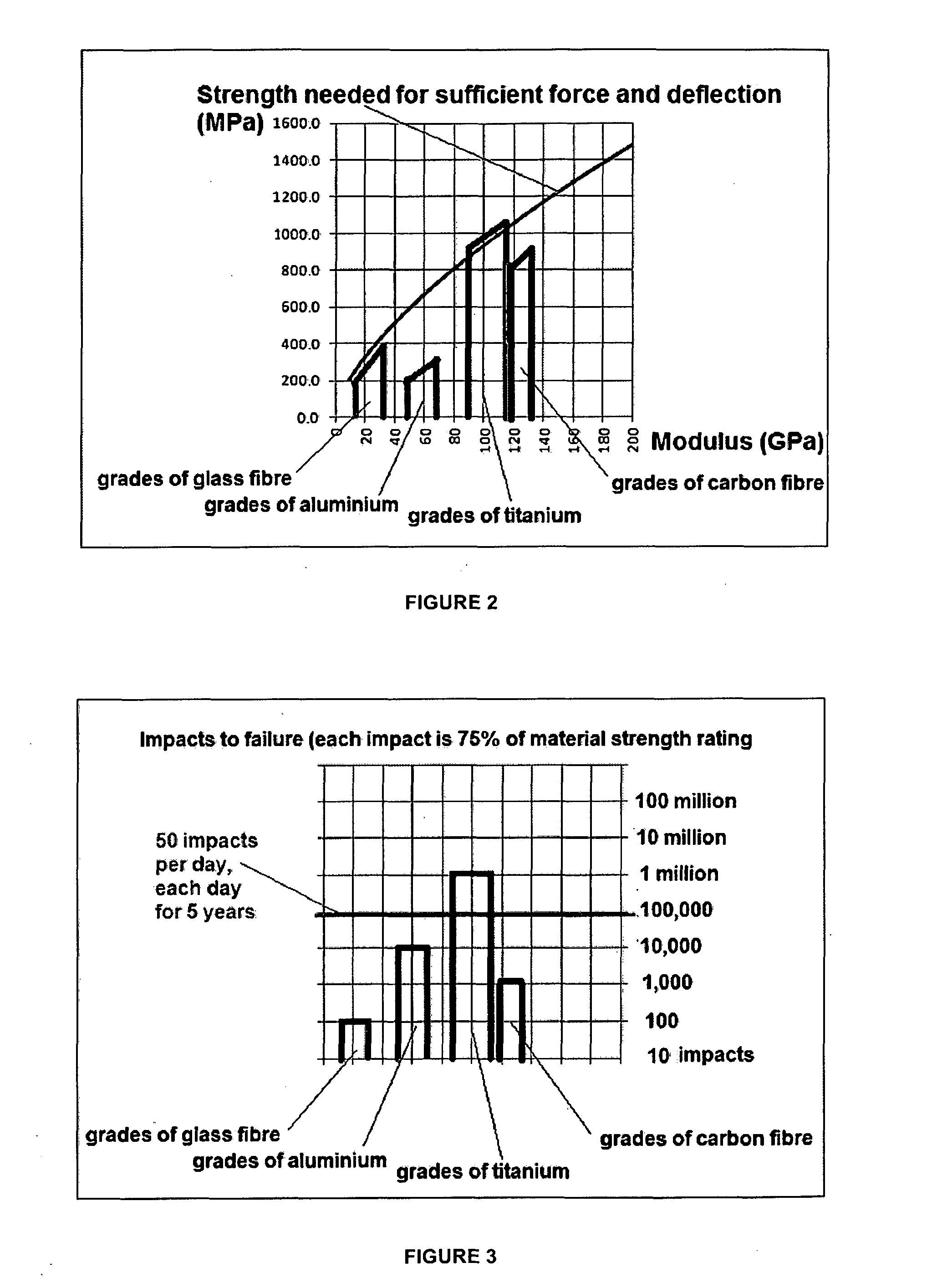Shock mitigation apparatus
a technology of shock mitigation and apparatus, which is applied in the direction of adjustable chairs, cycle equipments, chairs, etc., can solve the problems of high-performance watercraft, physical injury, and subject passengers to repetitive high g-forces, so as to reduce the amount of shock, prevent excessive movement of the torso and neck, and reduce the likelihood of spinal injuries
- Summary
- Abstract
- Description
- Claims
- Application Information
AI Technical Summary
Benefits of technology
Problems solved by technology
Method used
Image
Examples
working examples
[0105]The above described shock mitigation apparatus and uses are now described by reference to specific embodiments and examples.
example 1
Non Height Adjustable Dual Leaf Spring
[0106]Referring to FIG. 1, an assembled shock mitigation apparatus 1 with dual leaf springs 2A,B and a seat member 3 in the form of captain's chair design is illustrated. A base assembly in the form of a plinth 4 is used to support the seat member 3 and is attached to the sole of a boat (not shown) with fasteners and reinforcing plates / washers (not shown) in known fashion. A lower clamp member 5 is securely mounted to a pair of side support members 6 attached to the base assembly 4. An access port 7 is secured to the top of the plinth 4. A top and bottom leaf spring 2A,B slidingly engages with the lower clamp member 5. In the same way, an upper clamp member 8 is securely mounted to a pair of side support members 9, attached to a bottom assembly of the seat member 3. The lower and upper clamp members 5,8 are linked together via the top and bottom leaf springs 2A,B which are slidingly engaged and secured to the upper and lower clamp members 5,8 wi...
example 2
Non Height Adjustable Dual Leaf Spring in Use
[0119]Referring to FIG. 8, a simplified schematic diagram shows an applied load on a dual spring assembly mitigation apparatus 1 of FIG. 1 in use. The seat member, side mounting plates and plinth are not shown for clarity. The springs 2A,B are clamped at each end of the clamping members 5,8 where the lower clamp member 5 maintains one end of the springs 2A,B at a fixed angle relative to the side support members (not shown) and plinth (not shown). The upper clamp member 8 also maintains the distal end of the springs 2A,B at a fixed angle relative to the side support members and seat assembly. As can be seen, once a vertical load force is applied downwards to the shock mitigation apparatus 1, a deflection in the springs 2A,B in the form of an S-shaped curve is imparted thereby absorbing the vertical load force.
PUM
 Login to View More
Login to View More Abstract
Description
Claims
Application Information
 Login to View More
Login to View More - R&D
- Intellectual Property
- Life Sciences
- Materials
- Tech Scout
- Unparalleled Data Quality
- Higher Quality Content
- 60% Fewer Hallucinations
Browse by: Latest US Patents, China's latest patents, Technical Efficacy Thesaurus, Application Domain, Technology Topic, Popular Technical Reports.
© 2025 PatSnap. All rights reserved.Legal|Privacy policy|Modern Slavery Act Transparency Statement|Sitemap|About US| Contact US: help@patsnap.com



